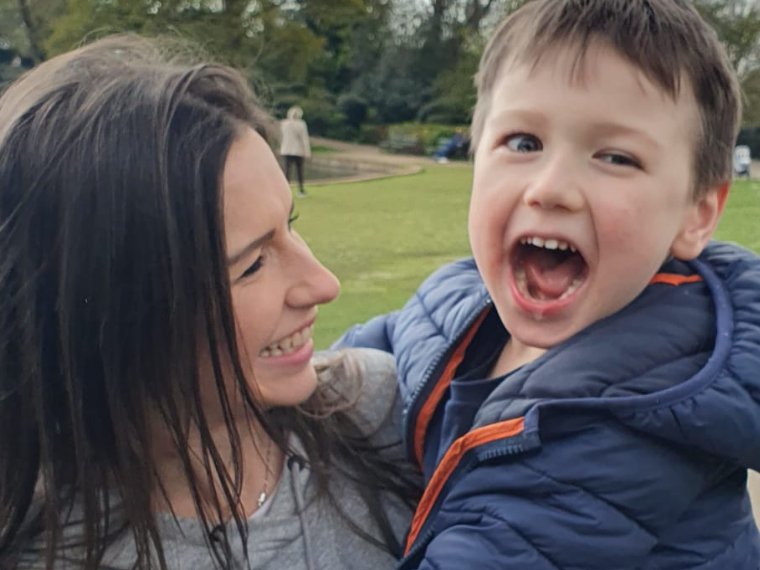
A brief history of Dravet Syndrome
Discover more about the background of this relatively newly diagnosed condition.
Advances in our understanding of genetics mean that there are promising new treatments on the horizon for Dravet Syndrome.
It is a technique used to change the genes inside our body’s cells to try to prevent, treat or cure a disease or condition. That might be:
This is not science fiction now, this is reality, and it’s going to affect how we look after individuals with Dravet Syndrome.Professor Sameer Zuberi, Consultant Paediatric Neurologist at the Royal Hospital for Children in Glasgow.
In around 85-90% of people, Dravet Syndrome is caused by a change in the SCN1A gene. Gene therapy for Dravet Syndrome is about correcting that particular genetic change.
The medicines that are currently available to treat Dravet Syndrome (including sodium valproate, clobazam and stiripentol, as well as new and emerging treatments such as epidyolex and fenfluramine) are increasingly good at controlling the epileptic seizures associated with Dravet Syndrome. But, even if someone with Dravet Syndrome has controlled seizures, they can experience significant problems with learning, behaviour, movement and other areas of development.
By correcting or changing the faulty gene that we know is the underlying cause of Dravet Syndrome, gene therapies may be able to dramatically alter seizure and non-seizure aspects of the condition alike. For this reason gene therapies are sometimes referred to as ‘disease-modifying’ treatments.
At the moment, it is too early to say if gene therapies will be successful, but data that’s available from initial research is promising. One of the reasons that researchers are so optimistic about gene therapy in Dravet Syndrome is that this approach already has a successful track record in other neurological conditions caused by one gene change. This includes Spinal Muscular Atrophy (SMA) and Duchenne Muscular Dystrophy.
Gene therapy studies in Dravet Syndrome are in the early stages, but researchers believe we are likely to see important advances during the next two to five years. This offers real hope to families, with promising new treatments on the horizon.
Some gene therapies are already entering into clinical trials. These include:
1) A treatment called Zorevunersen (STK-001). Developed by US biotech company Stoke Therapeutics to treat SCN1A–related Dravet Syndrome. Zorevunersen is an antisense oligonucleotide (ASO) therapy – it targets SCN1A pre-mRNA utilising a technology called ‘TANGO’. The aim is to restore protein levels to near normal, and hopefully in doing so, addressing the underlying causes of Dravet Syndrome.
Zorevunersen has so far been evaluated in two parallel Phase 1/2 trials in patients with Dravet syndrome: MONARCH in the US, and the ADMIRAL study in the UK.
A new global Phase 3 clinical trial is expected to start mid-2025. This will be a one-year study to evaluate reductions in major motor seizure frequency as well as improvements in behaviour and cognition in children and adolescents ages 2 to <18 years old. Find out more about plans for this study here.
2) A treatment called ETX101. Developed by Encoded Therapeutics, a US research company focused on developing gene therapies. ETX101 is a potential one-time, disease-modifying gene regulation therapy for SCN1A-related Dravet Syndrome. It uses a clinically validated adeno-associated virus (AAV) capsid, which delivers a transgene coding specially engineered to increase the expression of the SCN1A gene.
The first clinical trials for EXT101 started in 2024, as part of Encoded’s overarching POLARIS programme. Three Phase 1/2 studies were initiated: ENDEAVOR (US), WAYFINDER (Australia), and EXPEDITION in the UK.
EXPEDITION is currently recruiting in the UK (children ages 6 months to 4 years). The study will enrol 4 participants and evaluate up to three doses of ETX101 in open-label design. Primary outcomes are safety and changes in behaviour (measured by Vineland adaptive behavior composite). This is the first trial in Dravet syndrome to have a non-seizure primary efficacy outcome. Secondary outcomes are changes in seizure frequency during maintenance (weeks 5 to 52) and changes in language (measured by Bayley-4). Find out more about this study here.
A number of other gene therapy projects are also in development. You can read a detailed review of all these here. If you have specific questions about clinical trials please contact us directly on [email protected].
Funding research is part of our mission to bring hope to families living with Dravet Syndrome. We fund research that may help identify new treatments and, one day, bring about a cure for this condition.
Our research into gene therapy includes:
· A project to enhancing our understanding of how the SCN1A gene is read and give us more information about the changes in this gene that cause Dravet Syndrome and other related epilepsies (Dr Jenna Carpenter, UCL)
· Finding a new way to treat Dravet Syndrome by using a special editing technique which changes the instructions produced by the SCN1A gene (Prof Matthew Wood, University of Oxford)

Discover more about the background of this relatively newly diagnosed condition.

Find out how Dravet Syndrome develops when one of the genes in a part of the brain doesn’t function as it should.

Read more about how 85% of people with a diagnosis of Dravet Syndrome have a change (mutation) in the gene known as SCN1A.

Discover the benefits of getting tested for genes that can cause Dravet Syndrome and what is involved.